Google Home Hub review: the next step in Google's evolving smart home
The Home Hub – now the Nest Hub – adds a screen to the standard smart speaker formula
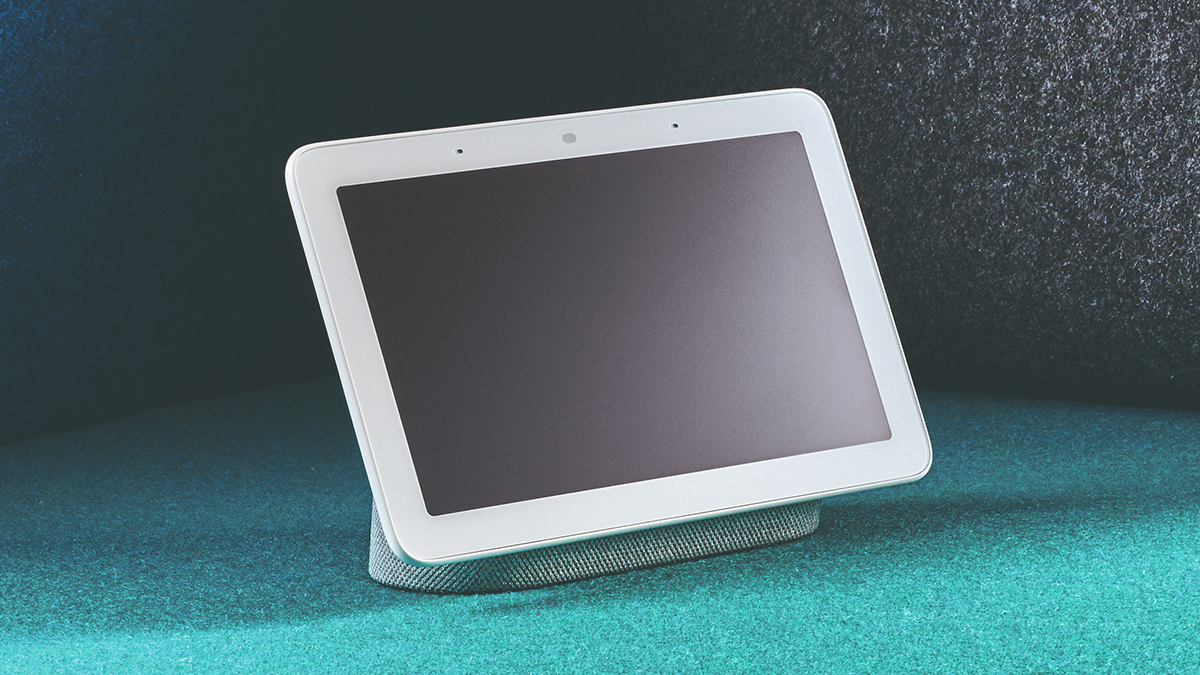
Google's smart-speaker-plus-display is dinky, capable, well-designed and worth the extra cost – as long as you'll be making use of YouTube, Google Photos, and the smart home controls.
-
+
Fits almost anywhere
-
+
Google Assistant keeps on improving
-
+
Decent sound performance
-
-
The Google Home Mini is half the price
-
-
Screen is small
Why you can trust T3

Welcome to T3's Google Home Hub review – and right out of the gate we should say that since this review was originally written, the Home Hub as been rebranded as the Nest Hub. It's still exactly the same device though.
After the Amazon Echo Show, the Google Home Hub was almost inevitable: a Google Home smart speaker, with a display attached. But is the extra screen (and the extra cost) worth the bother? We'll tell you all you need to know in our definitive Google Home Hub review.
We've been querying and testing and playing music through the Google Home Hub for several weeks to work out whether it's a good buy for your home or not. If you want to know exactly what features are on offer and how they work, read on for the full lowdown.
- These are the best smart home gadgets to kit our your rooms with
- Google also makes smartphones: read our Pixel 3 XL review
Google Home Hub: price and release date
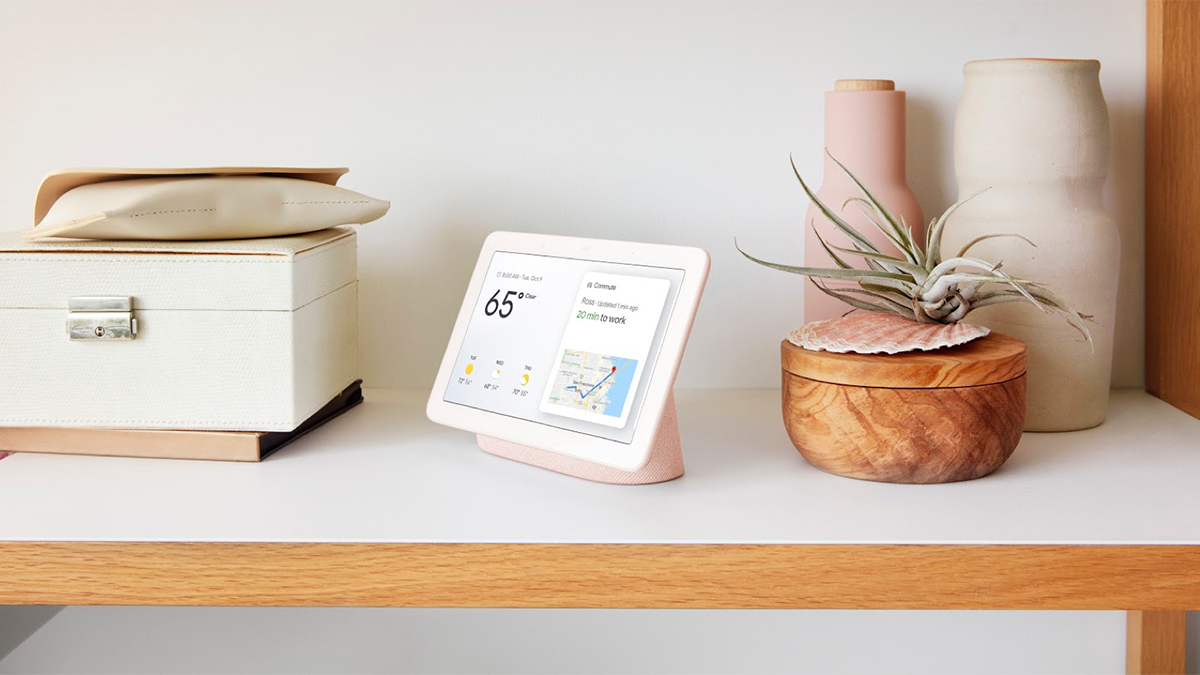
You can pick up the Google Home Hub (now the Nest Hub) direct from Google for £79.99 at the time of writing, though the price drop may not last – it started at £139 when it launched in October 2018. Chalk, charcoal, aqua and sand are your choice of colours for the speaker unit underneath.
If you're after something a little different or a little bigger, check out the Lenovo Smart Display. It has exactly the same Google Assistant-powered software on board, but comes with a larger speaker and either an 8-inch or a 10-inch display.
There's also the larger Google Nest Hub Max to consider – basically a bigger Nest Hub – as well as the recently launched Google Nest Audio (which gives you improved audio but no display).
Google Home Hub: hardware and design
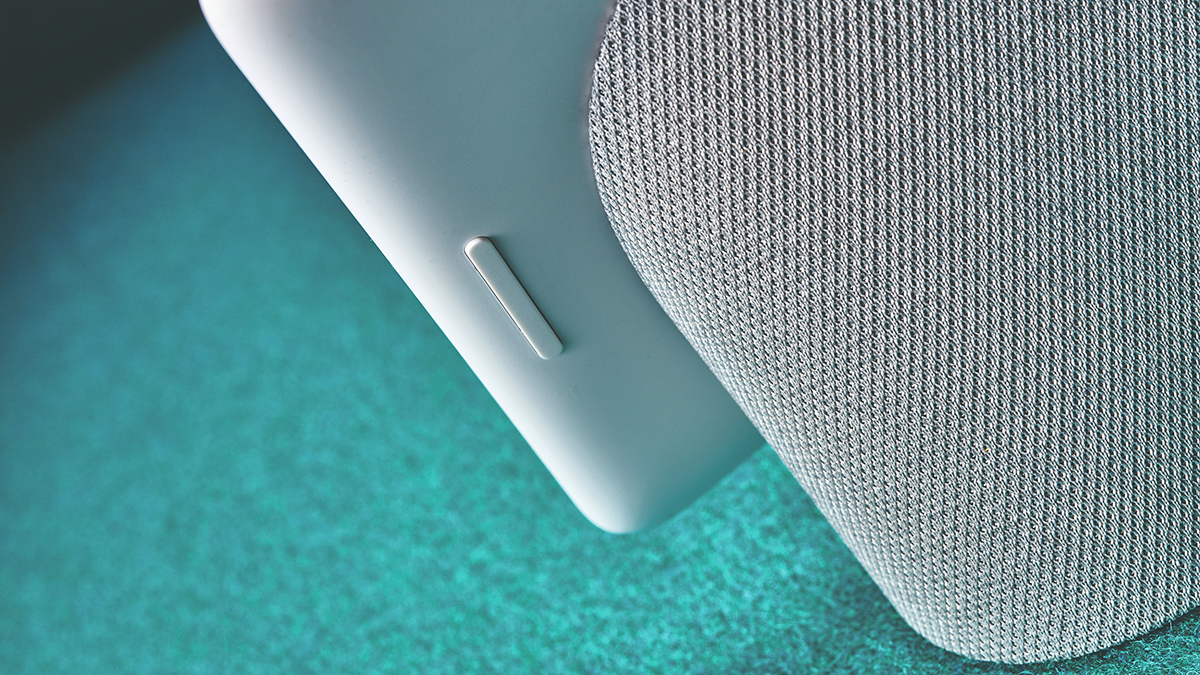
Since Google started getting serious about making its own hardware again – around about the time of the first Pixel phone in 2016 – it's gradually got better and better at putting out polished devices with a minimalist aesthetic appeal. The Google Home Hub follows that trend, with a compact, elegant look that's easy on the eye.
It's also a design that's going to fit in with most home offices, bedrooms and kitchens – you'd be hard pushed to find a room where the Google Home Hub actually looks out of place. The way the speaker doubles up as a base for the screen works really well, even if a little bit of volume is lost as a result.
The 7-inch touchscreen display was smaller in real life than we were expecting, but perhaps our expectations were all wrong. This is, after all, only slightly bigger than the biggest smartphones on the market at the moment, so don't think you're going to get anything like the iPad Pro in terms of display size.
It does mean you have to be quite close up to see the details on the Google Home Hub: not so important when YouTube is playing, but crucial if you're trying to check your calendar appointments. It's a matter of preference really, but we'd like the screen to be an inch or two bigger – and Google has indeed now launched a model with a bigger display.
In terms of the design, build quality, screen sharpness and so on though, you can't fault the Google Home Hub. Audio performance is somewhere between a Google Home Mini and a standard Google Home – fine for podcasts and movie dialog, decent enough for music, but unlikely to make you want to ditch your Sonos speakers in the fidelity stakes.
Google Home Hub: Google Assistant and software
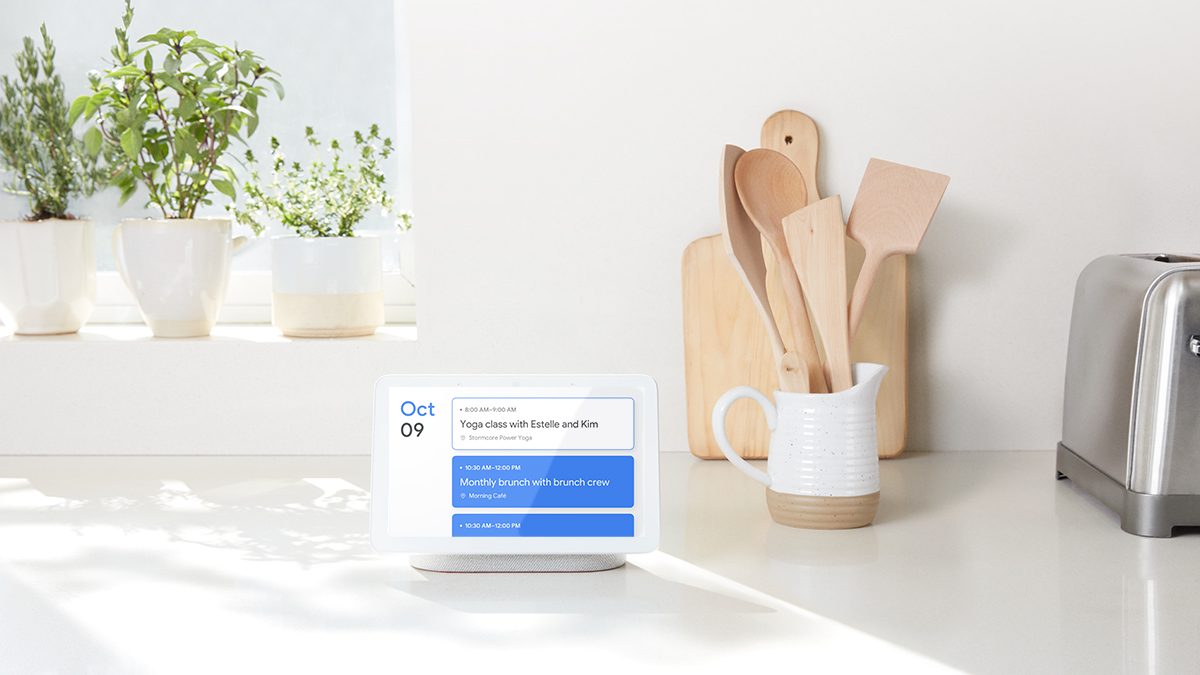
We won't go into a huge amount of detail about the Google Assistant, which is also available on phones and TVs and smart speakers. Chances are you've already had some experience of the digital assistant app, which continues to get better and better at surfacing information and and arranging our lives for us.
The question is – what benefit does getting a screen have? Answers about the weather forecast and travelling times come with informative and well designed graphics, for example, and if you ask about your upcoming schedule it's a lot easier to just look at your appointments than have them read out to you.
Then there's the likes of YouTube and Google Photos and so on that can make full use of the screen. At just 7 inches in size this isn't really the device for settling down to a movie, but it does come in handy on occasion. The display works like a Chromecast too, adding to its usefulness (just about any app you can cast can work with the Google Home Hub).
Even for audio only apps like Spotify, you get on screen controls for adjusting volume, skipping tracks and so on – it's a more convenient solution than saying "hey Google, next track" or "hey Google, set the volume to 50 percent" (though you can still do that too). After just a few days with the Google Home Hub, it felt rather limiting to have to go back to the Google Home Mini.
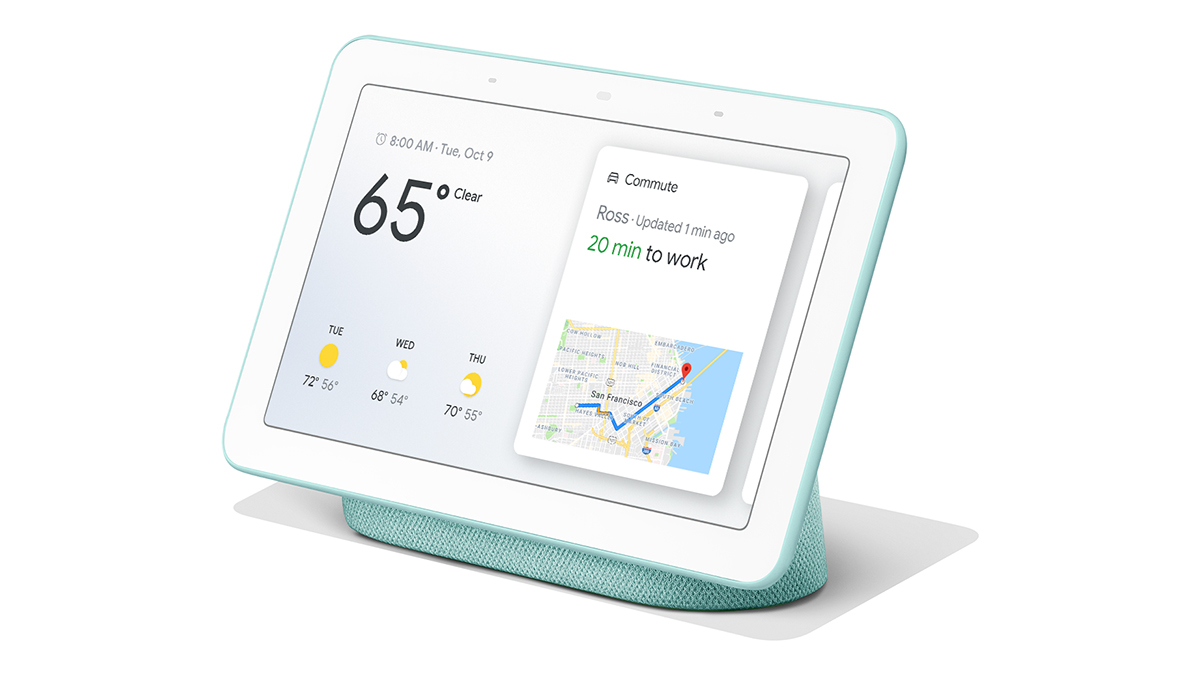
Of course the way that you use your smart speakers might be different – you might not have any need for the screen, and remember the Google Home Mini is less than half the price of the Google Home Hub – but for our money the screen is worth the extra cash, even if you're not planning to watch a load of video.
Controlling smart home devices is another scenario where having a screen really helps. You can tell any Google Home speaker to "turn the lights off" or "set the bedroom light to 50 percent brightness", but with a Google Home Hub you can see these devices, and their colours and brightness levels, on screen. You have the option of tapping to change settings as well as speaking.
Google Assistant continues to get better and better too, whether it's integrations with more smart home kit or just getting smarter at working out how to respond to your commands. From timers and alarms, to sports scores and news briefings, to playing simple games, its capabilities are expanding all the time.
Something we should point out is that the Home Hub has no camera on it, ostensibly for privacy reasons. It means you can't make two-way video calls through the Home Hub via Google Duo, though one-way video calls and audio calls are supported.
One reason you might get a Google Home Hub installed is if you have Nest security cameras set up – getting these feeds up on the Home Hub is very straightforward, whether you're using the touchscreen or your voice, so it's the obvious next step if you're looking to build on a smart home that's already partly Google-ified.
Google Home Hub: verdict
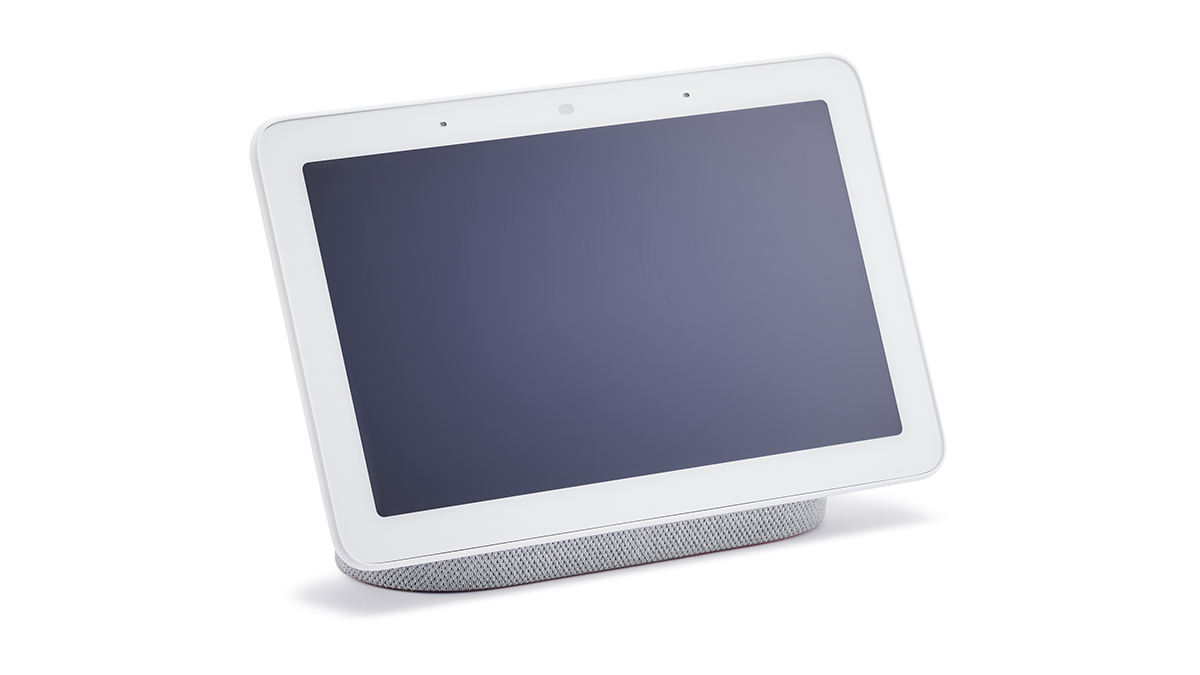
The Google Home Hub is tricky to sum up. On the one hand, the screen is too small for any serious video watching, and the speaker is too small for any serious music listening, and the overall package doesn't offer masses more in terms of basic functionality than a Google Home speaker.
On the other hand, the display often comes in handy – just about every voice command or request you make can benefit from that display, whether you're wanting to know how far away a certain city is or asking for your upcoming schedule. Add in the Chromecasting features, which means easy video playing from almost any app and on-screen controls as well, and the Google Home Hub looks much more appealing.
If you are using the Google Home Hub as an actual hub – as in controlling smart home devices, and beaming video and audio to it – then it's absolutely value for money. If you already have a Google Home Mini installed though, and it does everything you need it to, the upgrade might not be worth it.
Taken on its own, the Google Home Hub really impresses, thanks to the sheer range of stuff it can do for you – from showing a slideshow of your holiday pictures to playing the latest episode of your favourite podcast. Key to the Home Hub's appeal is Google Assistant, which is already genuinely useful and keeps getting better all the time, adding more features and more integrations month by month.
In Google's ideal world, you'd have a Home Hub in one room and Home speakers scattered around the house and that's about the best way to use the Home Hub – as the centre of a Google-powered smart home. If your needs are less ambitious and you're not sure you're ready to go all in with smart homes or Google right now, there's no harm in starting off smaller (and cheaper).
Sign up to the T3 newsletter for smarter living straight to your inbox
Get all the latest news, reviews, deals and buying guides on gorgeous tech, home and active products from the T3 experts
Dave has over 20 years' experience in the tech journalism industry, covering hardware and software across mobile, computing, smart home, home entertainment, wearables, gaming and the web – you can find his writing online, in print, and even in the occasional scientific paper, across major tech titles like T3, TechRadar, Gizmodo and Wired. Outside of work, he enjoys long walks in the countryside, skiing down mountains, watching football matches (as long as his team is winning) and keeping up with the latest movies.
-
 Warning: Ciele’s refreshed Elite Collection may cause excessive garment envy on race day
Warning: Ciele’s refreshed Elite Collection may cause excessive garment envy on race dayFlex on your run crew with Ciele’s latest drop
By Matt Kollat Published
-
 Smeg adds a touch of navy sophistication to its iconic breakfast set
Smeg adds a touch of navy sophistication to its iconic breakfast setIt's a minimalist's dream
By Lizzie Wilmot Published
-
 My most anticipated Netflix movie of the year gets a wild new trailer
My most anticipated Netflix movie of the year gets a wild new trailerHavoc looks pretty unbelievable
By Max Freeman-Mills Published